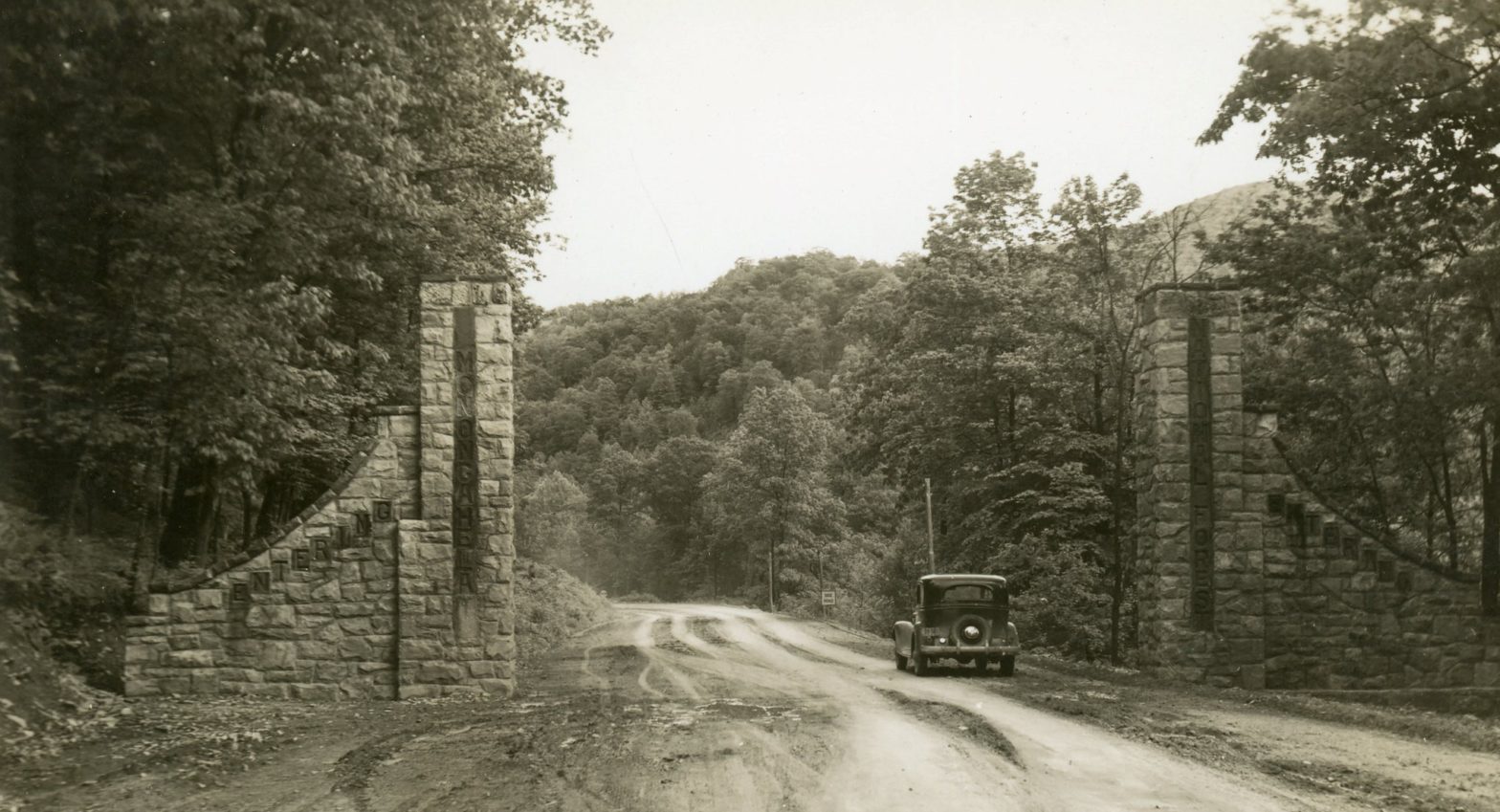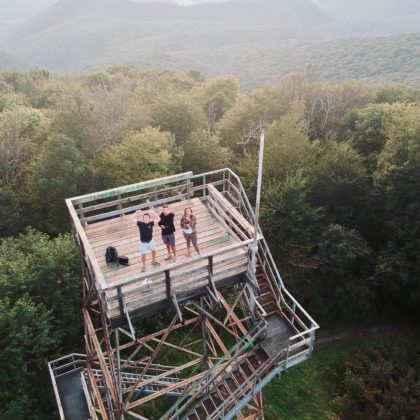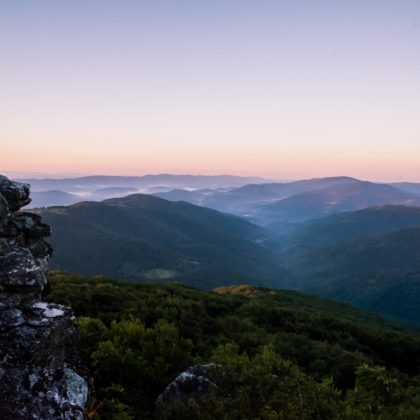The origins of the Monongahela National Forest began with the passage of the Weeks Act in 1911. This legislation permitted the federal government to purchase private lands in the eastern United States in order to protect headwaters of navigable streams. Much of these acquired lands were burned-over and eroded due to the logging and agricultural practices of the time.

On November 26, 1915, the federal government used the Weeks Act to purchase the first tract of what would become the Monongahela National Forest, a 7,200 acre tract in Tucker County from Thomas J. Arnold. Between 1915 and 1920 additional tracts, including lands in western Virginia, were purchased. President Woodrow Wilson signed the proclamation establishing the Monongahela National Forest, then consisting of 54,000 acres of federally-owned lands in West Virginia and western Virginia, on April 28, 1920.
The Monongahela National Forest experienced its greatest period of growth and infrastructure development during the height of the Great Depression in the 1930s. Increases in federal funding and the availability of Civilian Conservation Corps (CCC) labor led to a dramatic increase in forest development. The CCC reforested large areas, built critical forest infrastructure, and laid the groundwork for modern recreational tourism in the national forest with the construction of numerous recreation areas. This period also saw the national forest more than triple in size from 261,968 acres in 1932 to nearly 806,000 acres by 1942.
On April 28, 1936, President Franklin Roosevelt signed a bill transferring lands managed by the Monongahela in western Virginia and Hardy County, West Virginia, to George Washington National Forest. This legislation also expanded the Monongahela’s boundary to allow for the purchase of lands in what is now the southwestern portion of the national forest near Richwood.
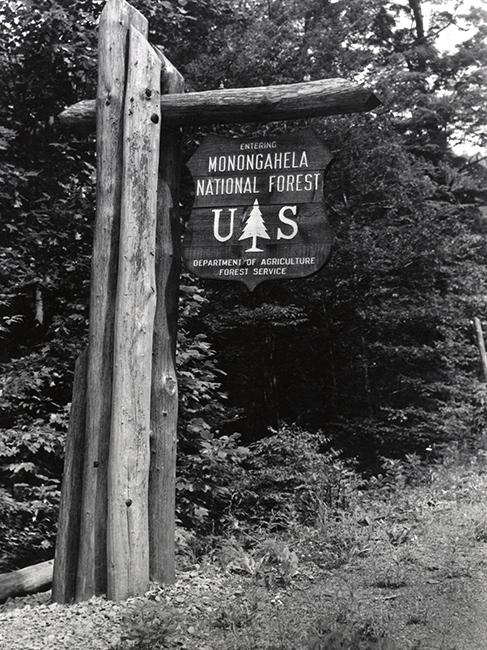
National forests are typically subdivided into a number of Ranger Districts. As the Monongahela expanded in size, so did the number of ranger districts. Cheat Ranger District, established at Gladwin in April 1920, was the first. Other ranger districts soon followed: Greenbrier Ranger District at Bartow in June 1922; Gauley Ranger District at Richwood in December 1933; White Sulphur Ranger District at Marlinton in July 1934; and Potomac Ranger District at Petersburg in May 1938. Since December 1937, the U.S. Department of Agriculture building in Elkins has served as the headquarters for Monongahela National Forest.
Over time, Ranger Districts were moved, divided and combined to better serve the national forest. Cheat Ranger District office was moved to Parsons in 1938. White Sulphur Ranger District was divided into two ranger districts in 1957. The northern portion was named Marlinton Ranger District and headquartered in the former White Sulphur District office in Marlinton. The southern district retained the name White Sulphur Ranger District and opened an office in White Sulphur Springs. In late 1990s, Cheat and Potomac Ranger Districts were combined under one District Ranger at Petersburg, and Marlinton and White Sulphur Districts were combined under one District Ranger at Marlinton. All four offices remain open.
September 28, 1965, President Lyndon Johnson signed Public Law 89-207 establishing Spruce Knob-Seneca Rocks National Recreation Area. This 100,000 acre area was the first National Recreation Area in the USDA Forest Service. Its boundaries encompass some of Monongahela National Forest’s most scenic areas, including the sheer cliffs of Seneca Rocks and Spruce Knob, the highest point in West Virginia at 4,683 feet.
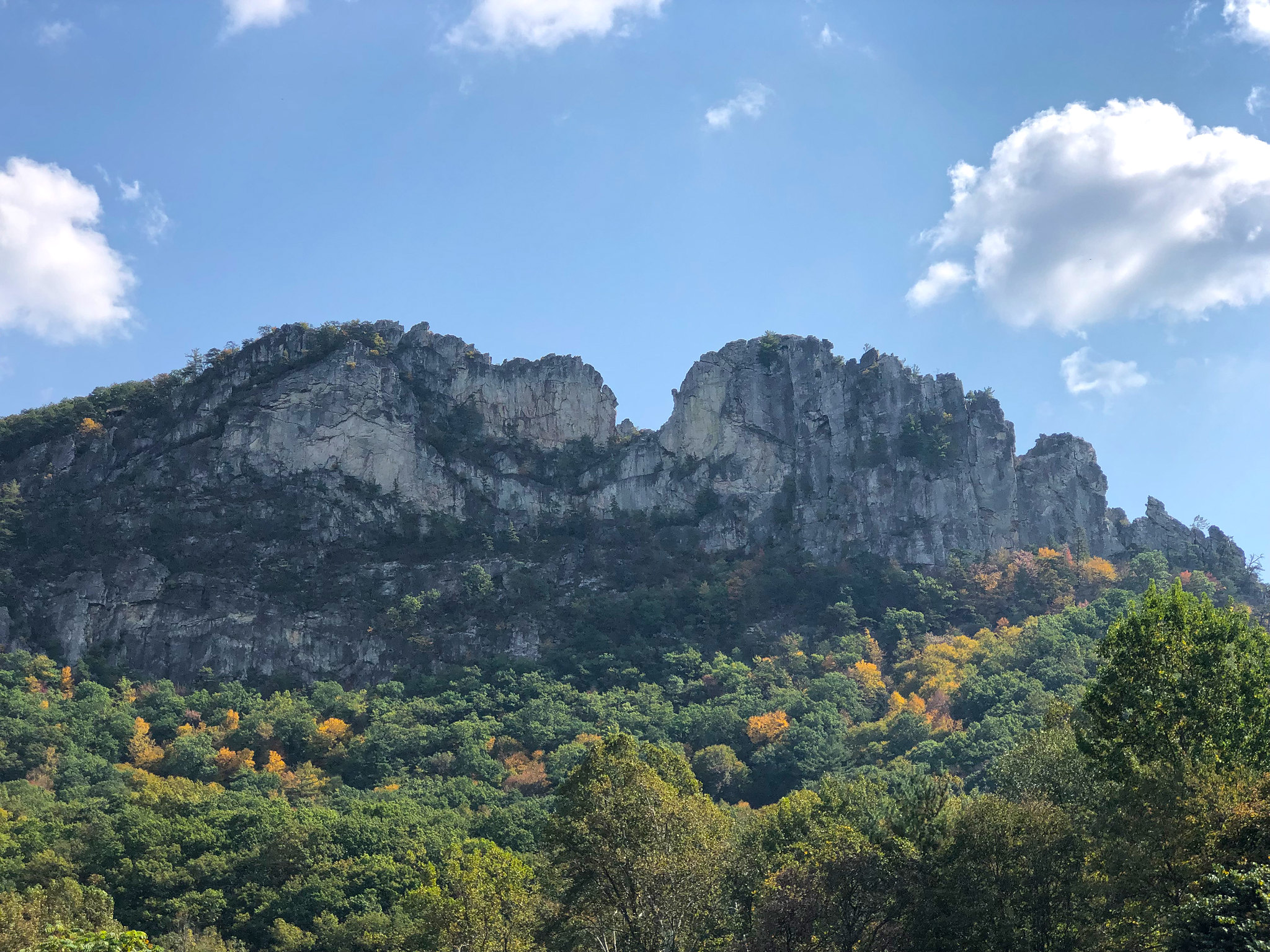
Two visitor centers were constructed in the 1960s and 1970s to accommodate increasing numbers of tourists visiting the Monongahela. Cranberry Nature Visitor Center was dedicated July 29, 1967, shortly after the adjacent Cranberry Glades was classified as a Natural Area on December 1, 1965. Seneca Rocks Visitor Center was built at the base of the Seneca Rocks in Pendleton County and dedicated June 25, 1978. After withstanding a devastating flood in November 1985, fire consumed the visitor center May 25, 1992. Construction of a new center began soon after the fire and the present Seneca Rocks Discovery Center opened to the public in 1999.
President Gerald Ford’s signing of the Eastern Wilderness Act January 3, 1975 established the first two Wilderness Areas on Monongahela National Forest — Otter Creek and Dolly Sods. Other congressionally-designated Wilderness areas soon followed. Cranberry Wilderness, the largest Wilderness on the Monongahela, and Laurel Fork North and Laurel Fork South Wilderness Areas were all established January 13, 1983. In 2009, Cranberry Wilderness was expanded from 35,600 acres to 47,742 acres under the Omnibus Public Land Management Act. The same 2009 legislation also established Spice Run, Big Draft, and Roaring Plains West Wilderness Areas on the Monongahela.
Presently, Monongahela National Forest manages over 920,000 acres of public land in 10 West Virginia counties. Ninety-eight percent of these lands were purchased using provisions of the Weeks Act, creating a living legacy for future generations.
There are several ways to explore the Monongahela National Forest in Randolph County. Biking, hiking, fishing, hunting, and camping are all recreational opportunities available. The Monongahela National Forest turned 100 years old on April 28th, 2020. #MNF100 #RandolphWV
